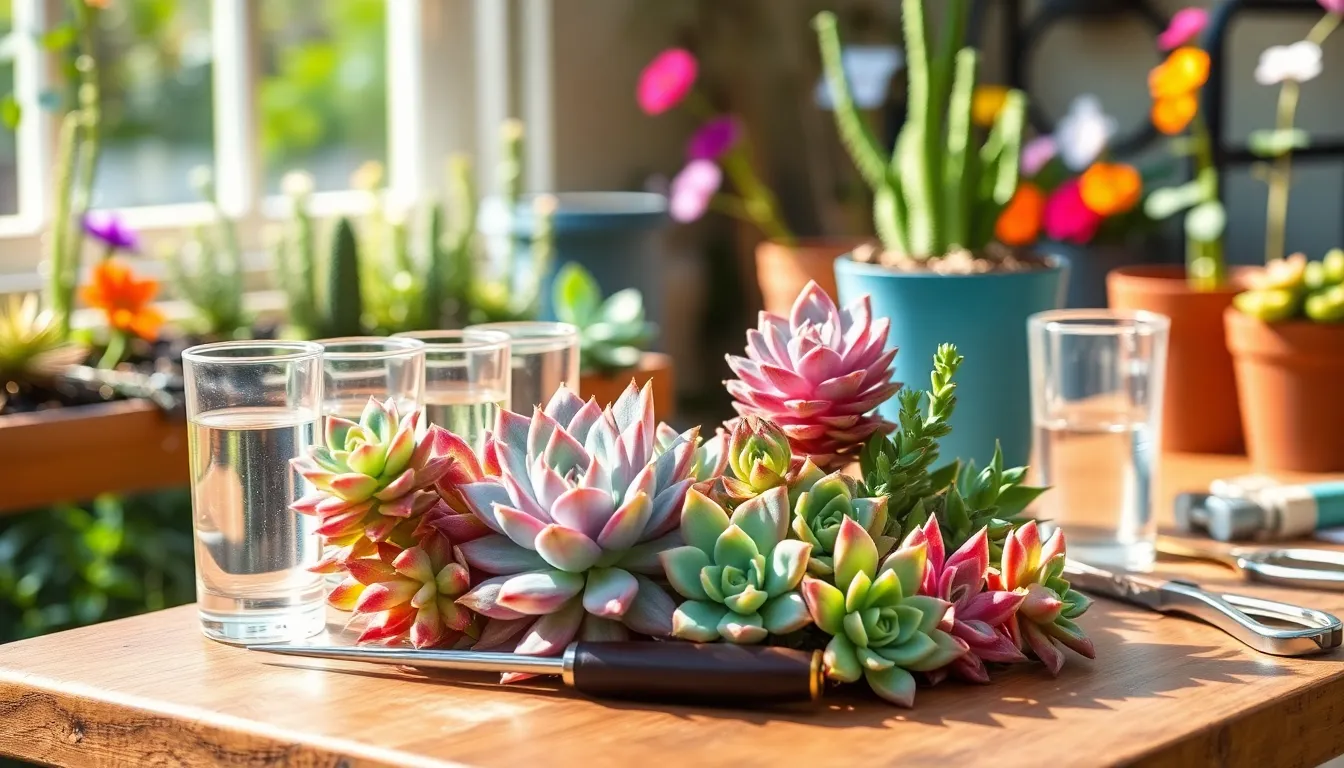There’s a certain magic in watching a single leaf or tiny cutting transform into a thriving succulent, and for both novice and seasoned gardeners, propagation offers a fascinating glimpse into nature’s wonders. Whether you’re just starting out or you’ve been tending to your leafy companions for years, understanding the essential tools for propagating succulents can elevate your gardening experience to new heights of success and satisfaction.
In this article, we’ll delve into the must-have tools that make succulent propagation not only possible but also enjoyable and efficient. From the right pair of shears to soil mixes and moisture meters, you’ll learn how to equip your gardening toolkit with everything needed to nurture these resilient plants. Get ready to discover practical tips that will empower you to propagate with confidence, ensuring your succulents flourish for years to come.
Choosing the Best Propagation Tools
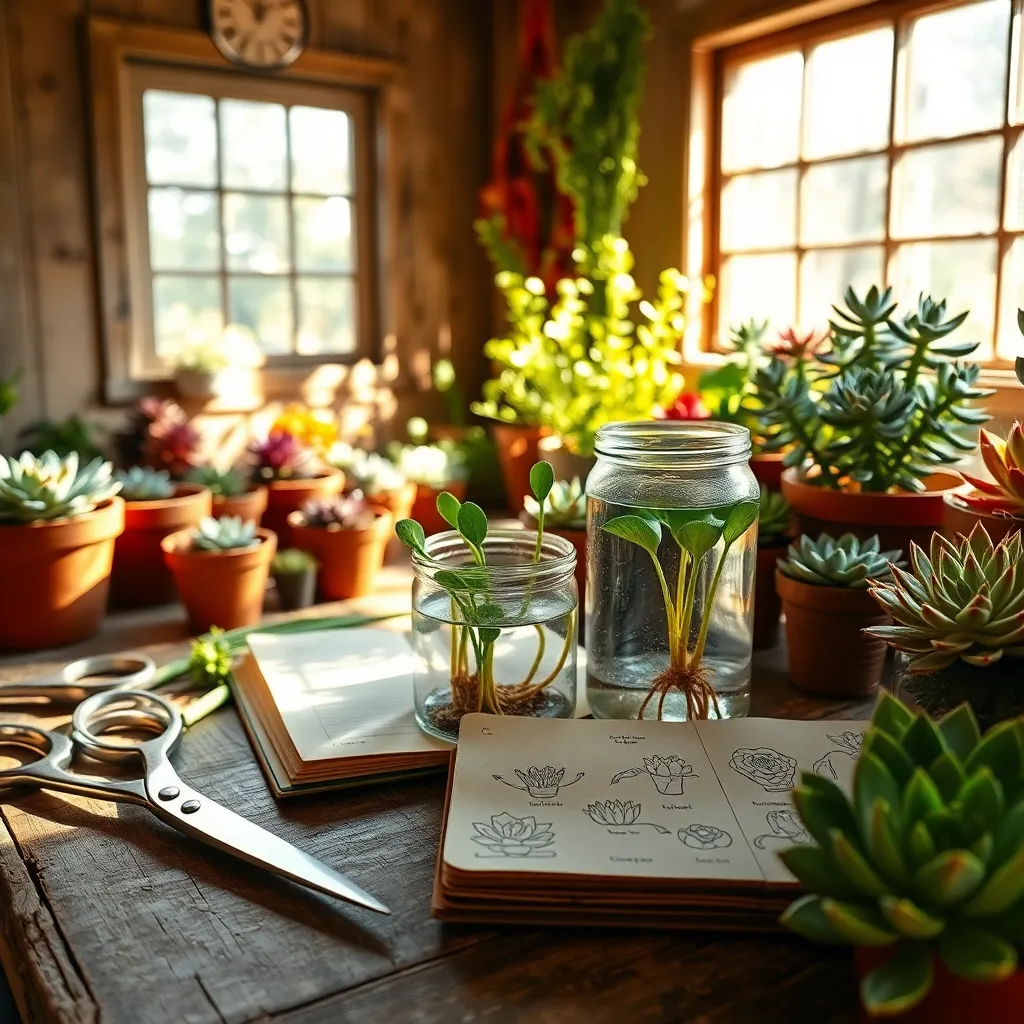
When it comes to propagating succulents, having the right tools can make the process smoother and more successful. A good pair of sharp scissors or pruning shears is essential to make clean cuts on succulent leaves or stems, which helps in reducing infection and promoting quicker healing.
For those just starting, consider investing in a propagation station or tray with compartments to keep different cuttings organized. These setups often come with drainage holes, which are crucial for preventing waterlogged conditions that can lead to rot.
More experienced gardeners might find a rooting hormone beneficial, especially when propagating more challenging succulent varieties. While not always necessary, dusting the cut end of a succulent with a rooting hormone can encourage faster root development and increase success rates.
Additionally, using a sterile, well-draining soil mix is vital for the health of your new plants. A mix containing perlite or sand can enhance drainage, ensuring that the succulent cuttings do not sit in excess moisture.
Must-Have Cutting Tools for Succulents
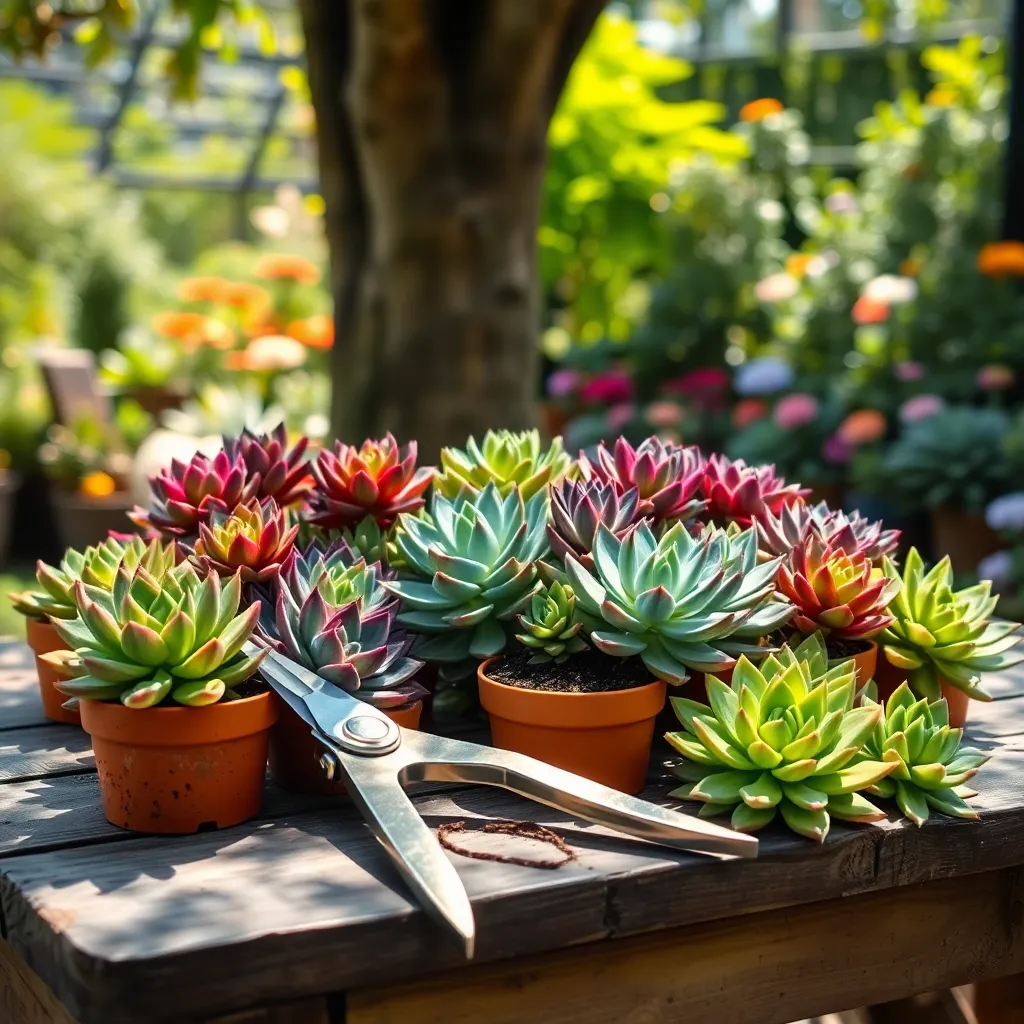
When propagating succulents, having the right cutting tools is crucial for ensuring clean cuts and successful growth. One essential tool is a pair of sharp, clean pruning shears, which helps in making precise cuts without damaging the plant tissue.
For smaller succulents or delicate tasks, consider using a pair of fine-tip scissors. These are perfect for snipping off tiny offsets or trimming away dead leaves.
Additionally, a sterilized craft knife can be invaluable for precise cutting and reducing the risk of disease. Always clean your cutting tools with rubbing alcohol before and after use to prevent the spread of pathogens.
Avoid dull blades, as they can crush the succulent’s stems and lead to poor healing. Consider regularly sharpening your tools or replacing them when necessary to maintain optimal performance.
Proper Containers for Growth
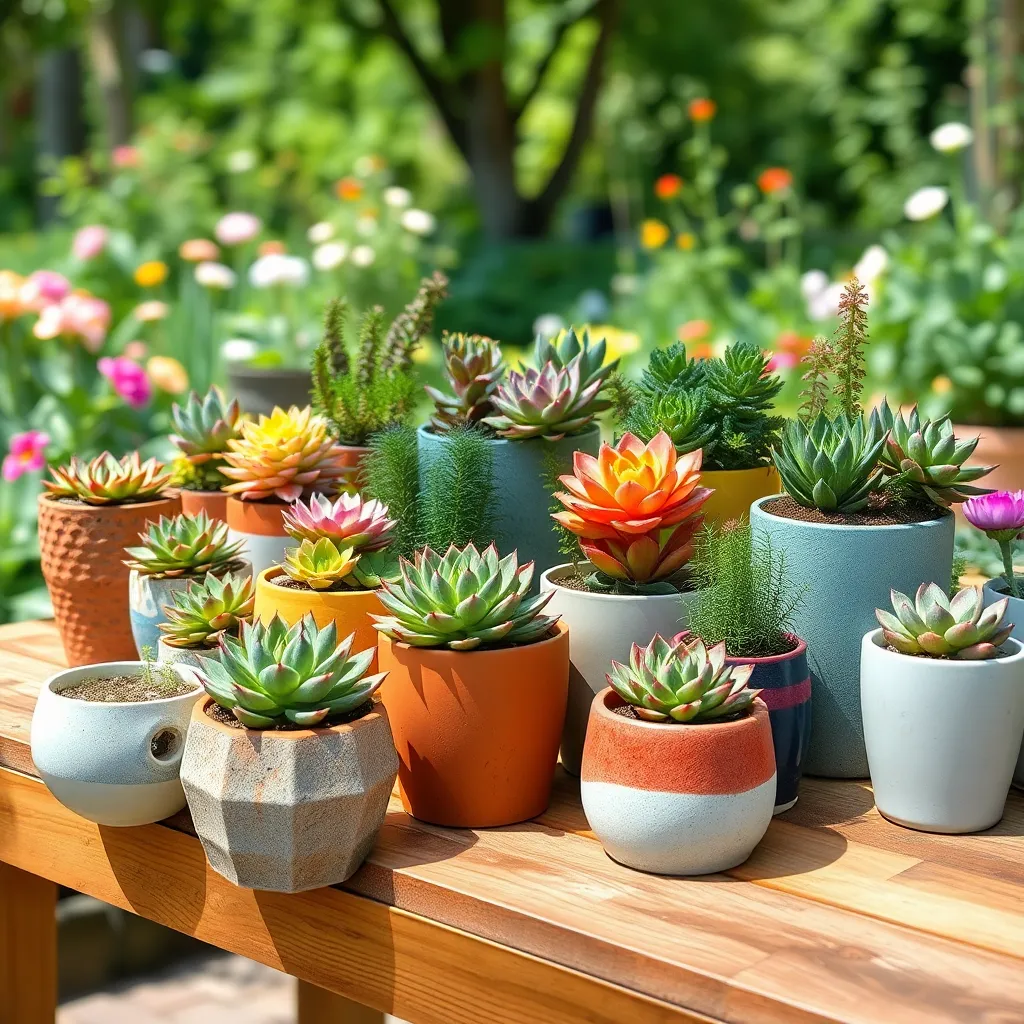
When propagating succulents, choosing the right containers is crucial for success. Opt for pots with drainage holes to prevent water from pooling at the bottom, which can cause root rot.
For beginners, terra cotta pots are highly recommended due to their breathability and ability to wick moisture away from the soil. This helps maintain the optimal moisture balance that succulents require.
Experienced gardeners might experiment with ceramic or plastic pots, which can retain moisture longer. It’s essential to adjust your watering schedule accordingly, ensuring succulents are not overwatered.
Use a well-draining soil mix, such as a cactus or succulent blend, to support healthy root development. This mix typically includes components like sand, perlite, or pumice, which help improve drainage.
Advanced tip: consider using gravel or small stones at the bottom of the container to further enhance drainage. This technique can be particularly beneficial in regions with high humidity or frequent rainfall.
Regularly check the soil moisture by inserting a finger about an inch deep; water only when it’s completely dry. Succulents thrive on the “less is more” approach, so err on the side of underwatering.
Optimal Soil Mix and Accessories
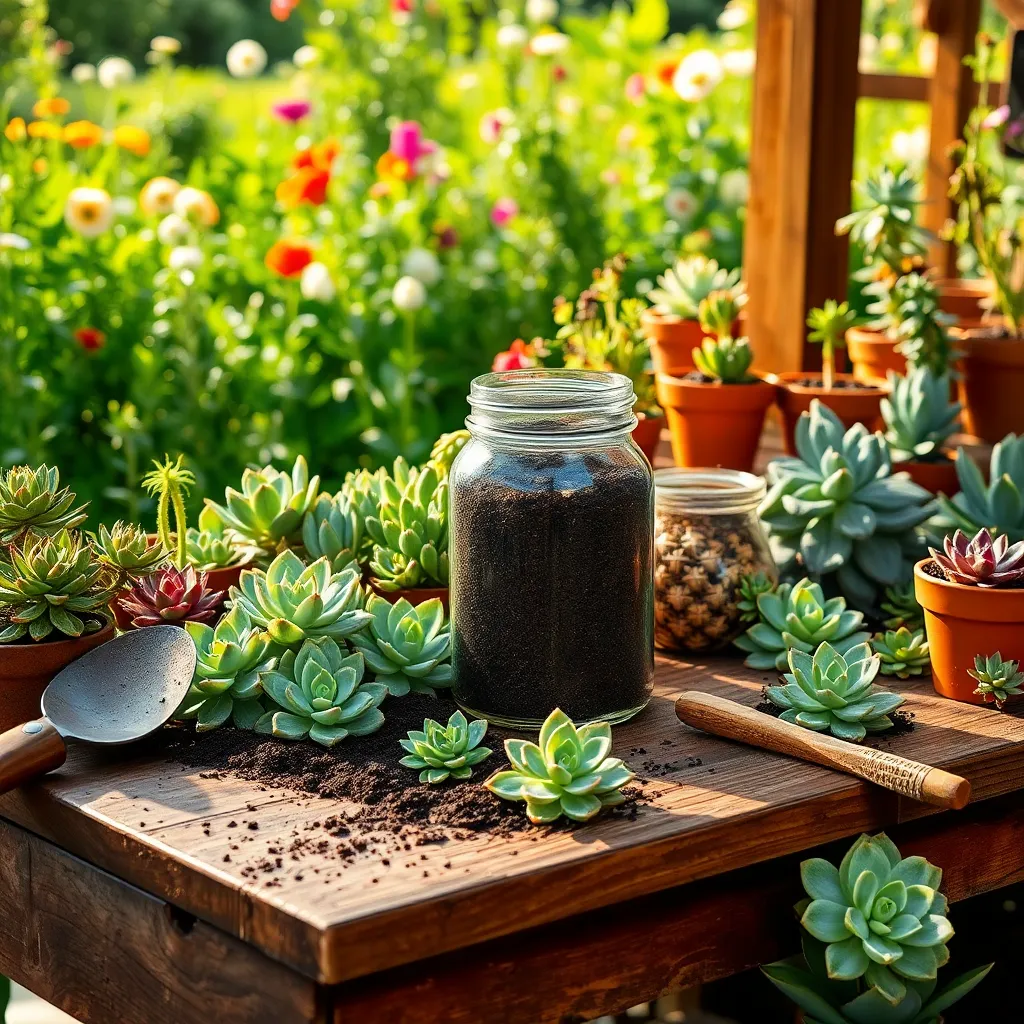
To propagate succulents successfully, it is essential to use an optimal soil mix that provides excellent drainage. A mix of 50% potting soil, 30% coarse sand, and 20% perlite or pumice is ideal for most succulents, allowing roots to breathe while retaining necessary moisture.
Succulents are prone to root rot if left in wet soil, so selecting the right soil composition is crucial. For beginners, pre-mixed cactus or succulent soil available at garden centers offers a convenient option, ensuring a balanced mix without the guesswork.
Experienced gardeners might experiment by adding a small amount of crushed granite or fine gravel to their soil mix to improve drainage further. This addition can be particularly beneficial in regions with high humidity, helping to prevent excess moisture retention around the roots.
Besides the soil mix, using appropriate accessories can enhance the propagation process. For instance, using a small, dedicated watering can with a narrow spout helps control the amount of water applied, preventing overwatering.
Labeling each succulent cutting with plant tags can aid in tracking growth progress and identifying species, especially if you’re propagating multiple varieties. This practice is beneficial for both beginners learning to recognize different succulents and advanced gardeners managing complex collections.
Finally, consider using a heat mat to maintain a consistent temperature for your cuttings, especially during cooler months. While not mandatory, this accessory can speed up root development and increase the success rate of propagation by mimicking the warm conditions succulents naturally thrive in.
Maintenance Tools for Healthy Succulents
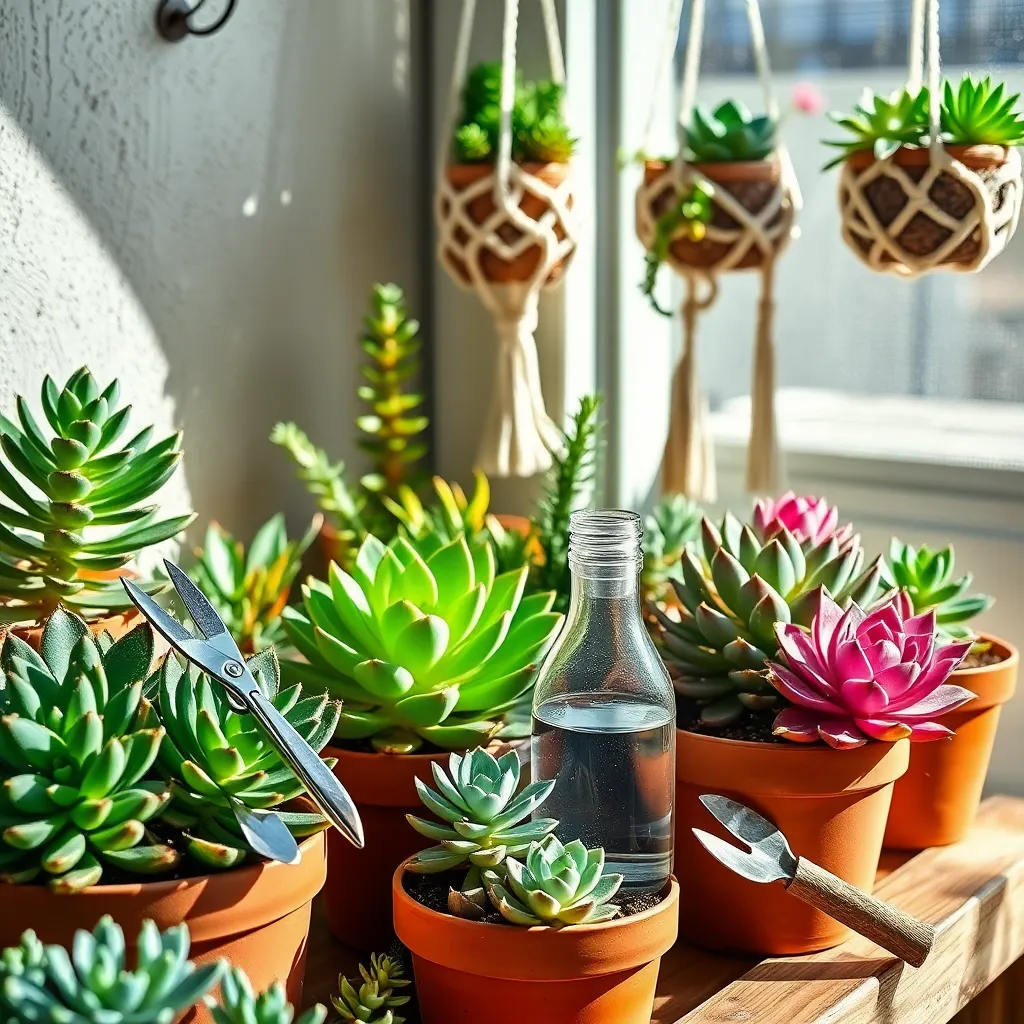
Proper maintenance tools are essential for the health of your succulents. Having the right equipment can make tasks like trimming and cleaning more efficient, ensuring your plants thrive.
First and foremost, invest in a pair of sharp, clean pruning shears. Regular trimming helps remove dead leaves and encourages new growth, keeping your succulents looking their best.
Another valuable tool is a soft brush or small paintbrush. This allows you to gently remove dirt and dust from the leaves without damaging the plant’s delicate surface.
Additionally, a watering syringe or a squeeze bottle with a narrow spout is ideal for precise watering. This helps prevent overwatering, which is crucial since succulents are prone to root rot if their soil is too moist.
For more advanced care, consider using a moisture meter to monitor soil humidity. This can help you refine your watering schedule, especially in periods of high humidity or dry spells.
Finally, don’t overlook the importance of a good-quality pair of tweezers. They’re perfect for removing pests like mealybugs or dealing with tiny seedlings during propagation.
Conclusion: Growing Success with These Plants
As we wrap up our exploration of ‘Essential Tools For Propagate Succulents,’ let’s recap the five relationship concepts we’ve cultivated: communication, patience, nurturing, adaptability, and growth. Much like propagating a succulent, strong relationships require clear communication to understand each other’s needs, patience to allow bonds to deepen over time, and nurturing to maintain connection and intimacy. Adaptability is crucial as relationships evolve, and fostering personal and mutual growth ensures a thriving partnership.
Ready to put these concepts into action? Start today by setting aside time for a heart-to-heart with your partner, focusing on one area you wish to nurture or grow together. This simple step can lay the groundwork for a vibrant and resilient relationship.
Bookmark this article as your go-to guide for relationship success; it’s a resource you can return to whenever you need a gentle reminder of the essential tools at your disposal. As you tend to your relationship with the same love and care you would a blossoming plant, may it flourish and blossom into something truly beautiful. Here’s to nurturing bonds that last a lifetime!

